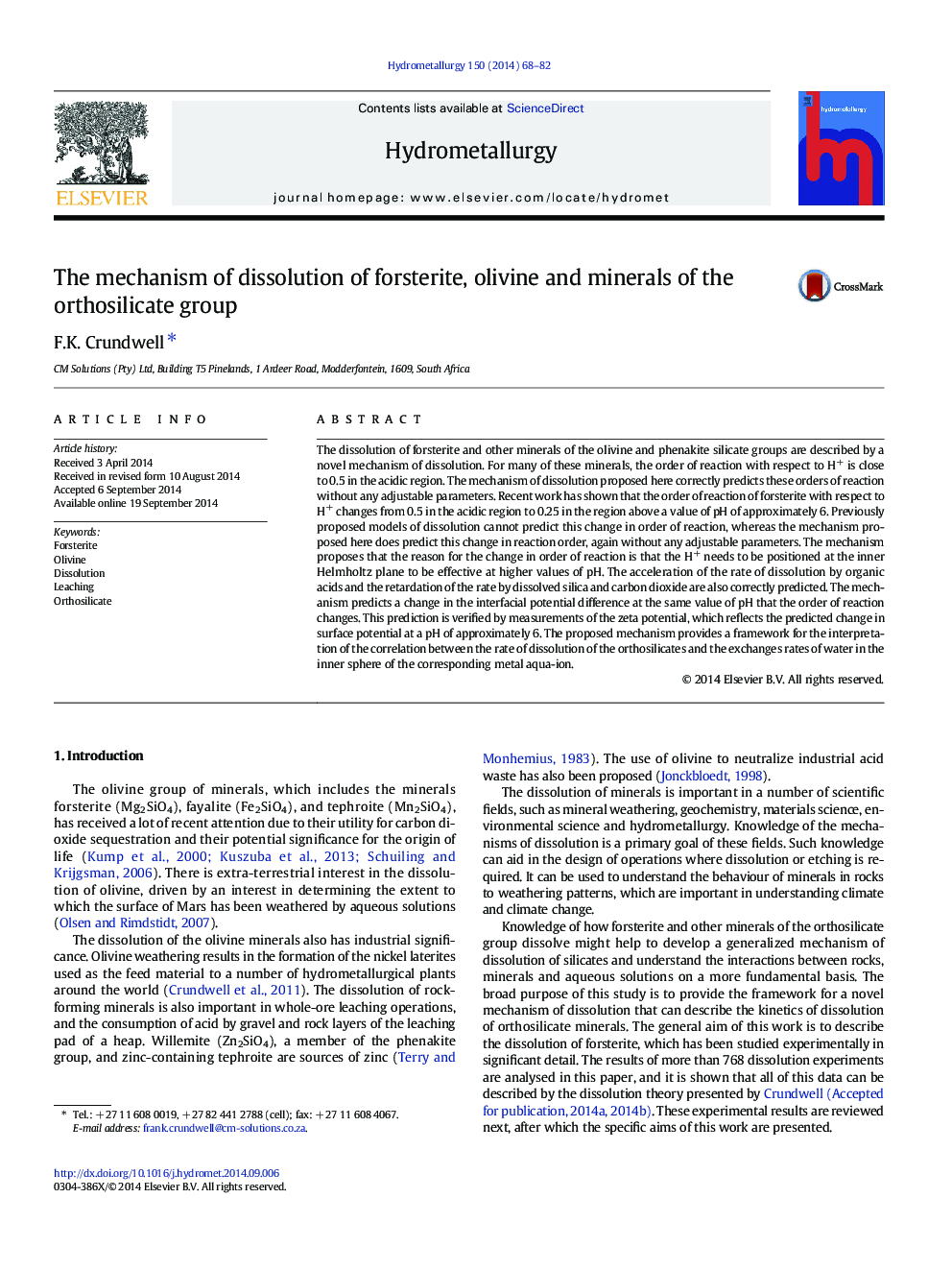| Article ID | Journal | Published Year | Pages | File Type |
|---|---|---|---|---|
| 212158 | Hydrometallurgy | 2014 | 15 Pages |
•We present a novel mechanism of dissolution for forsterite and the olivines.•The mechanism correctly predicts the orders of reaction wrt H+•The mechanism correctly predicts change from 0.5 to 0.25 in order of reaction wrt H+ at a pH of about 5.6.•The mechanism correctly predicts the orders of reaction wrt carbonate ions, organic acids, and silicate ions.•The mechanism correctly predicts the change in zeta potential at pH of about 5.6.
The dissolution of forsterite and other minerals of the olivine and phenakite silicate groups are described by a novel mechanism of dissolution. For many of these minerals, the order of reaction with respect to H+ is close to 0.5 in the acidic region. The mechanism of dissolution proposed here correctly predicts these orders of reaction without any adjustable parameters. Recent work has shown that the order of reaction of forsterite with respect to H+ changes from 0.5 in the acidic region to 0.25 in the region above a value of pH of approximately 6. Previously proposed models of dissolution cannot predict this change in order of reaction, whereas the mechanism proposed here does predict this change in reaction order, again without any adjustable parameters. The mechanism proposes that the reason for the change in order of reaction is that the H+ needs to be positioned at the inner Helmholtz plane to be effective at higher values of pH. The acceleration of the rate of dissolution by organic acids and the retardation of the rate by dissolved silica and carbon dioxide are also correctly predicted. The mechanism predicts a change in the interfacial potential difference at the same value of pH that the order of reaction changes. This prediction is verified by measurements of the zeta potential, which reflects the predicted change in surface potential at a pH of approximately 6. The proposed mechanism provides a framework for the interpretation of the correlation between the rate of dissolution of the orthosilicates and the exchanges rates of water in the inner sphere of the corresponding metal aqua-ion.
